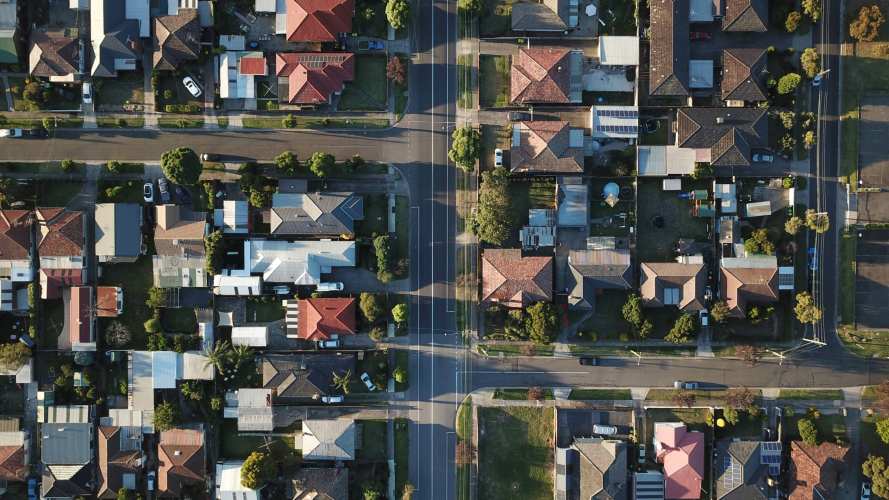Like most markets, the property sector is subject to the laws of supply and demand. As supply tightens, prices go up and when the market is flush, prices are supposed to go down.
Escalating prices on the back of short supply is the story of many capital city and regional markets over the past few years with limited housing stock a hot button issue politically and socially.
Yet house prices in Melbourne are bucking the trend, falling 0.9% in the three months to January.
There’s also been a rise in total listings and lower property clearance rates, classic signals of an oversupplied market.
See Also: Melbourne Suburbs to Watch in 2024
So what’s going on in Melbourne?
Let’s look at the numbers. CoreLogic data estimates there were 81,203 home sales in Melbourne over the 2023 calendar year while the number of new listings was considerably higher at more than 90,000 homes.
CoreLogic’s head of research Eliza Owen said in that sense, the market was oversupplied which caused purchasing values to slip.
However, she noted from the perspective of people needing somewhere to live, oversupply didn't do anything to ease rental demand.
Speaking to the Savings Tip Jar podcast in late-2023, Domain chief of research Dr Nicola Powell also echoed these sentiments.
“If I was going to pick out any city where supply levels are much better, that is Melbourne, I think partly because of the ability for Melbourne to sprawl," Dr Powell said.
SQM Research estimated there were 32,684 listings in Melbourne in January, 6.2% higher than a year ago. The number of new listings (less than 30 days old) is up 21.7% compared to a year ago, the second highest behind Darwin.
The number of distressed listings in Victoria, at 906, is also up 17.8% on a year ago - again, second behind the Northern Territory.
Tight Melbourne rental market
While property values slipped, rental vacancy rates across Melbourne were less than 1% in 2023, compared to a historic five-year average of 2.2%.
During the past year, the city’s rents jumped 10.7%.
This was likely fuelled by a significant increase in new migrants. Historically, Melbourne accommodates around 30% of Australia’s net overseas migration which hit record levels last year.
At the same time, the Victorian government’s housing service Homes Victoria saw a state-wide 4.7% increase in new housing applications resulting from homelessness.
Ms Owen said each of these factors points to an increase in housing demand, even if the people who need homes are not in a position to buy.
So, what do we make of Melbourne's housing market conundrum?
“The answer is in recognising that there is a difference between the market for purchasing housing and the need for somewhere to live,” Ms Owen said.
The buy/rent divide
“This helps to explain why changes in rent values and home purchasing values have differed over the past few years,” Ms Owen said.
“The change in purchase values fluctuated amid changes in policy settings while rents moved consistently higher.”
Simply put, as rising interest rates and other factors kept people out of the buyers’ market, they stayed in the private rental market where demand continued to escalate.
With competition and rents going up, saving for a deposit also became more challenging for those looking to cross over into the home buyers’ market.
Ms Owen said it’s important to understand that a decline in home values is not necessarily a step toward solving the housing crisis.
“Some households will never be in the market to buy,” she said.
“In these cases, it’s important to have a consistent supply of social housing outside of market fluctuations, to ensure adequate housing for those that just need somewhere to live.”
What's ahead for Melbourne property?
Ms Owen added her voice to widespread forecasts that interest rates have peaked and are set to move lower in the second half of the year.
She expects this will boost demand for the housing market nationally, as in classic supply-demand models.
“Buyer demand will be quite sensitive to [interest rate cuts],” Ms Owens told Savings.com.au.
“We can expect to see an uptick in sales from that.”
At the same time, she expects rental demand to remain strong.
“Rising rents compress the difference between rents and mortgage payments as interest rates come down as monetary policy loosens,” Ms Owen said.
“We can expect more people in the market wanting to buy, particularly first home buyers and other owner-occupiers.”
Ms Owen said she expects recent price falls in Melbourne will start to arrest once prices are low enough to entice buyers.
Image by Tom Rumble on Unsplash

Ready, Set, Buy!
Learn everything you need to know about buying property – from choosing the right property and home loan, to the purchasing process, tips to save money and more!
With bonus Q&A sheet and Crossword!

